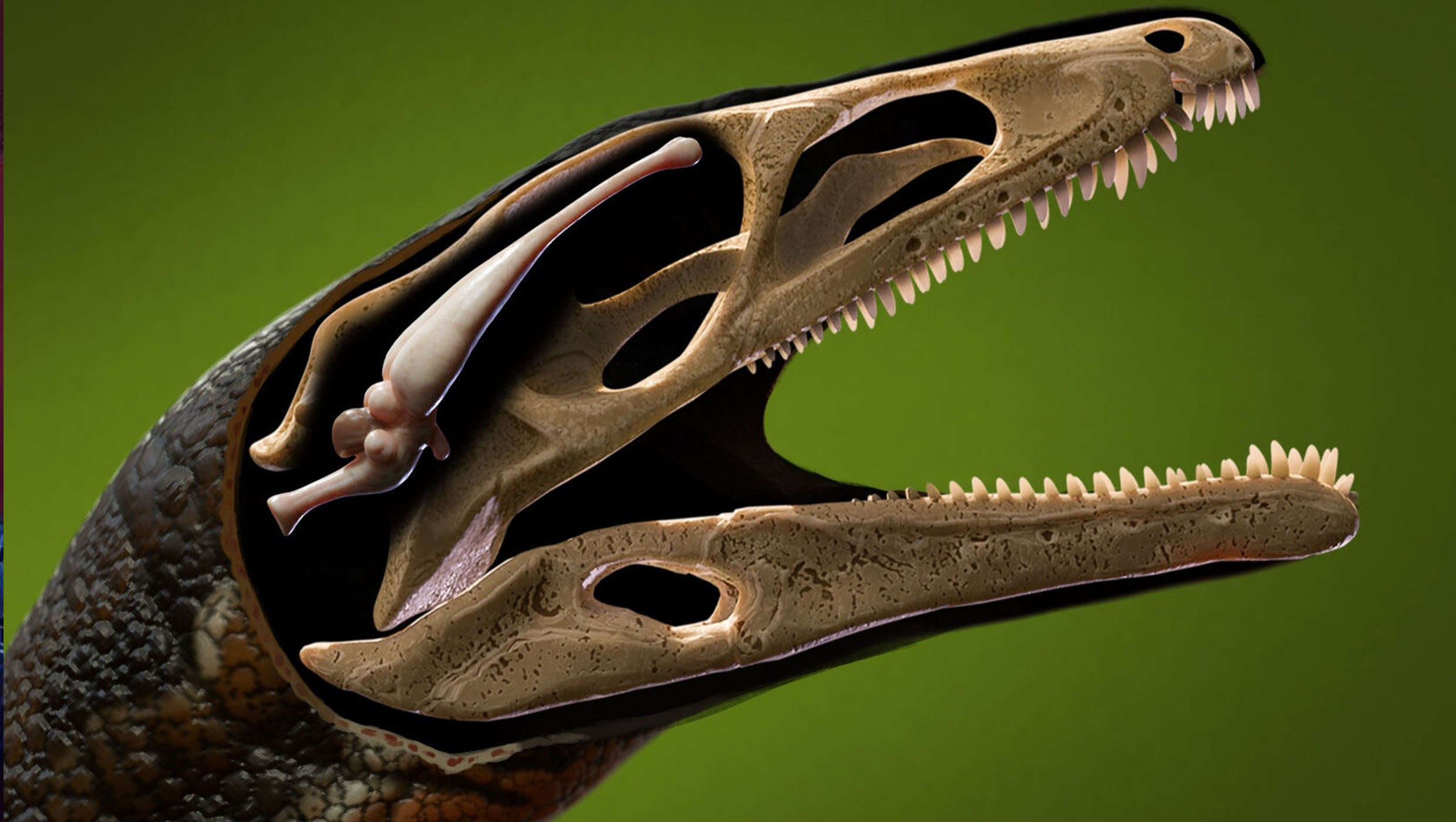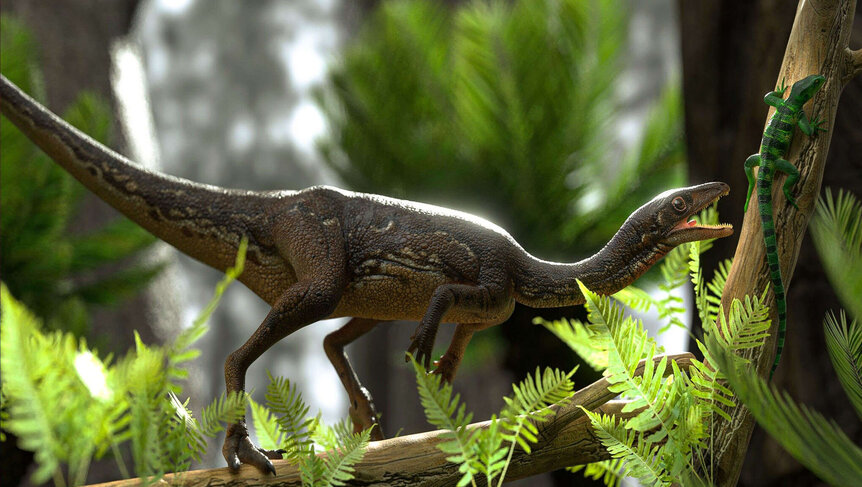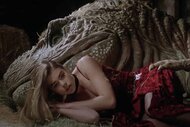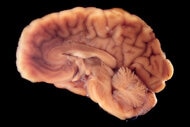Create a free profile to get unlimited access to exclusive videos, sweepstakes, and more!
Complete brain of a dinosaur has been reconstructed for the first time

Some brains have been found shockingly preserved for thousands of years. There is no chance anything would remain in the skull of a 233-million-year-old dinosaur, but if life finds a way, so does science.
The first complete brain of a dinosaur has been reconstructed, and it belonged to Buriolestes schultzi, one the oldest known dinosaurs. Dinosaur skulls preserved well enough to give insight on the brain are rare. Paleontologists exploring in Brazil finally dug up a skull with an intact cranial cavity, which allowed them to digitally reconstruct the entire brain, and it doesn’t look like what you would expect. The brain of B. schultzi is closer to a multi-lobed club than anything like this.
Hard to believe such a quick and slender creature was the ancestor of a line of dinosaurs that would grow huge—but they wouldn’t be nearly as smart.
Dinosaur brains have mostly been a mystery until now. Skulls that old are often crushed by the ravages of time or completely missing. Not only does the reconstruction of B. schultzi’s brain give more insight on that species, but it is also unearthing how small and svelte Triassic hunters on two legs would eventually evolve into gargantuan four-legged herbivores who chewed on leaves and lumbered around.
“This is the oldest complete brain of a dinosaur. It helps us to put all the other known brains in a more refined evolutionary context," paleontologist Rodrigo Müller, who led a study recently published in The Journal of Anatomy, told SYFY WIRE. "This brain will be used now as the “starting point” of studies of dinosaur brain evolution."
To find out what went on inside the mind of this dinosaur, Müller and his team micro-CT-scanned the fossil to get an idea about the morphology of B. schultzi’s cranial cavity, whose contours made suggestions about the shape and size of different parts of its brain. They also used the information to create an endocast, or a cast of the cranial cavity, which they could handle for further study without fear of damage.
"This process resulted in 3498 slices," Müller said. "We analyzed these slices and filled digitally the space where the brain should rests. So, combining the filled regions from the slices, we created the 3D model of the brain."
B. schultzi had a small and elongated olfactory tract, suggesting that smell wasn’t necessarily that important to its survival. This doesn't necessarily mean all theropods that existed during the early Triassic period had the same lack of smell. Evidence from the fossilized skulls of other species shows that their olfactory tracts were less elongated, indicating that there was potential for change depending on a dinosaur’s environment. The ponderous four-legged beasts to follow would develop a shorter olfactory tract and larger olfactory bulbs. They probably used their heightened sense of smell for social interactions, seeking edible plants and sniffing out predators.
“Our hypothesis relies on calculations of the Encephalization Quotient (EQ), which is a measure used to compare the size of the brain of animals relative to its body size. The EQ is high in Buriolestes when compared to the giant sauropod dinosaurs," Müller said. "However, EQ of Buriolestes is not high when compared to other carnivorous dinosaurs. It is expected, because Buriolestes is the oldest dinosaurs with the EQ estimated. There are no complete brains of other dinosaurs with similar age."
Something that was very well-developed in B. schultzi was its floccular lobe, which is right underneath the cerebellum. This is the structure which helped it visually track prey. To make sure it could catch dinner, it made really quick and sharp movements with its head, neck and eyes. The floccular lobe in its huge, plant-eating sauropod descendants evolved to be considerably smaller, because they no longer needed to watch out for a meal on the run.
The floccular lobe wasn’t the only thing that shrank as the ancestors of Brachiosaurus and Diplodocus evolved. The brain of B. schultzi is larger relative to its size than the brains of those massive lizards were in relation to theirs. This is thought to have happened as early sauropodomorphs transitioned into massive sauropods that began to feed on foliage and no longer needed to hunt. In evolution, if you don’t use it, you lose it. Most animals evolve larger brains relative to body size, but what happened with sauropodomorphs is the complete opposite.
"When the first sauropodomorphs acquired an elongated neck, they became the first land vertebrates to feed on tall vegetation. No other vertebrates were able to eat from plants that tall," Müller explained. "Therefore, during the initial evolution of herbivorous sauropodomorphs, these animals had no competitors. Conversely, the brain is a structure that demands a lot of energy cost. Therefore, if these animals have no need of complex strategies to find food, the high energetical costs to keep a big brain are unnecessary. Hence, the group invested energy in bigger bodies instead of bigger brains."
So much for saying size matters when it comes to gray matter.















